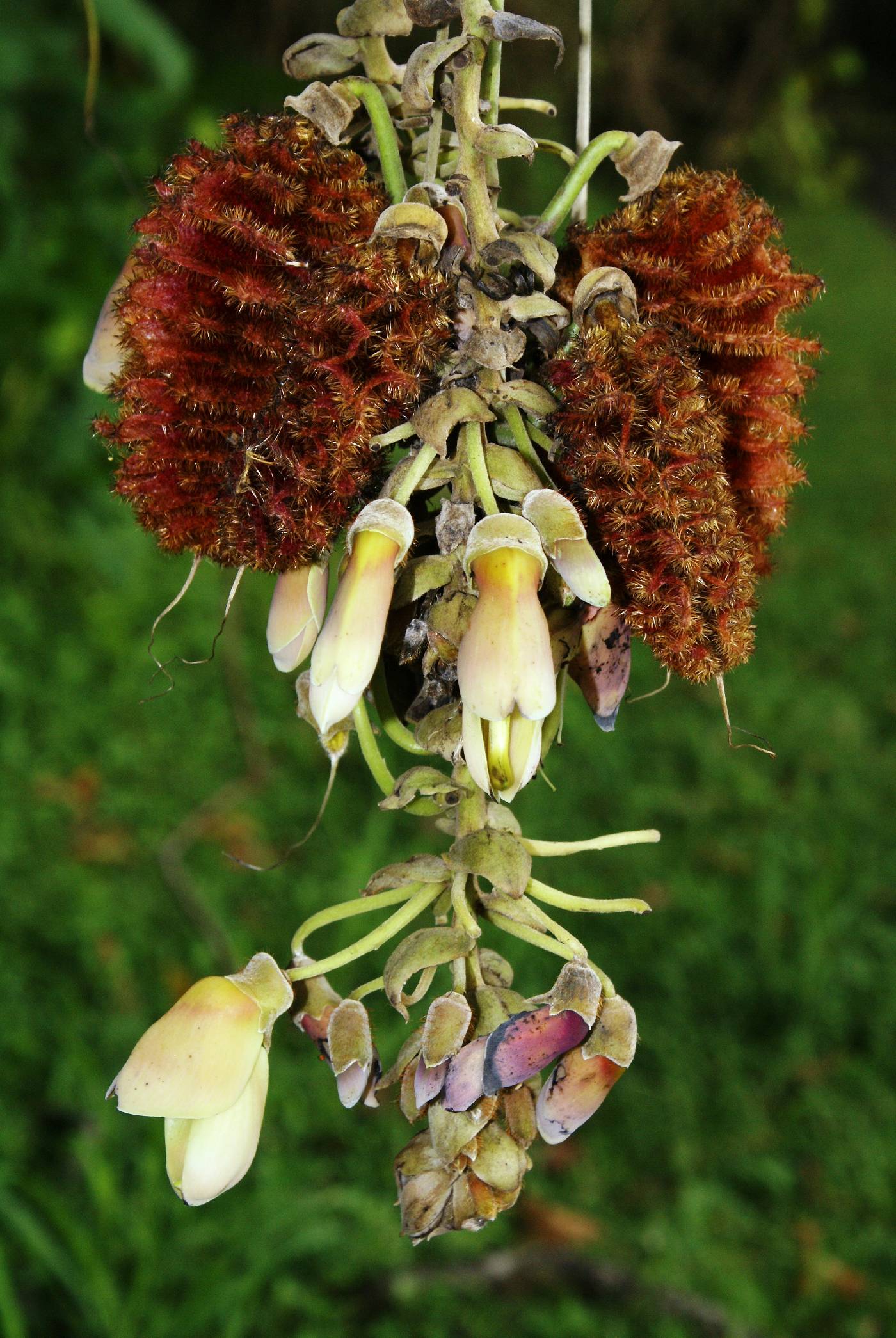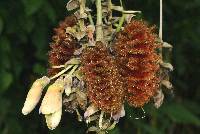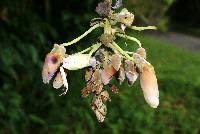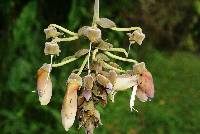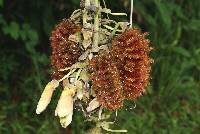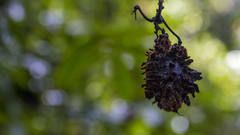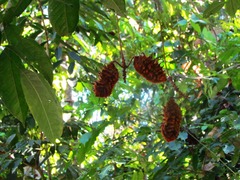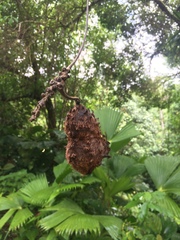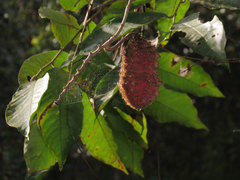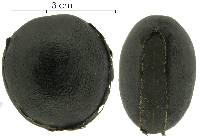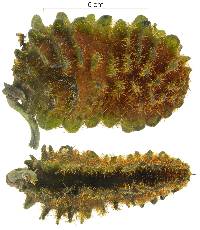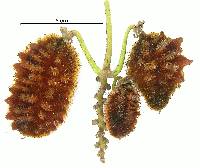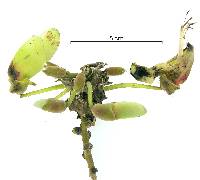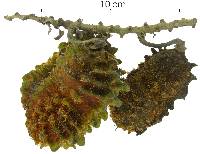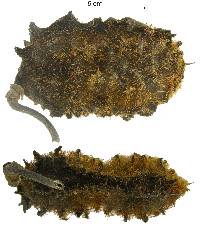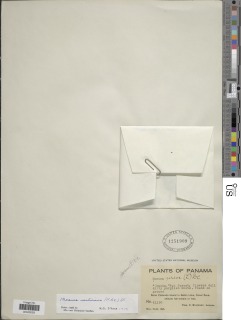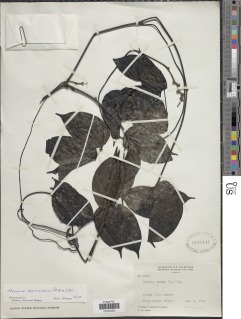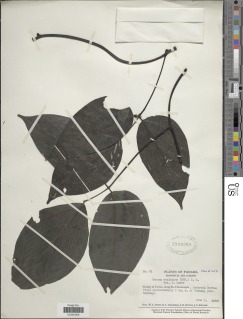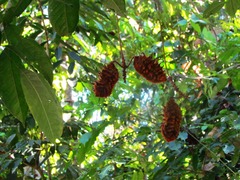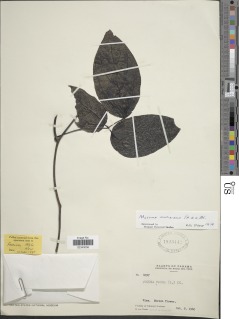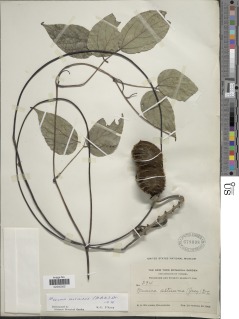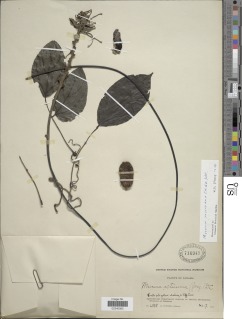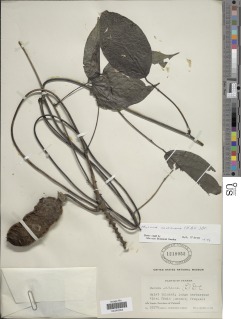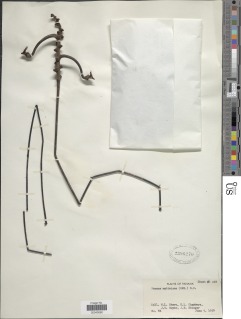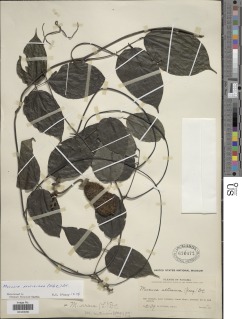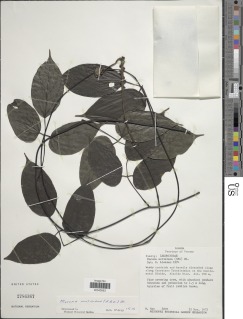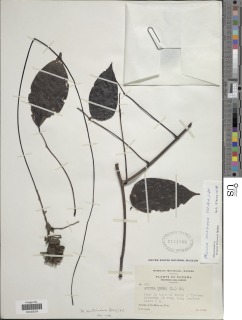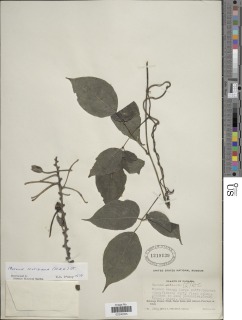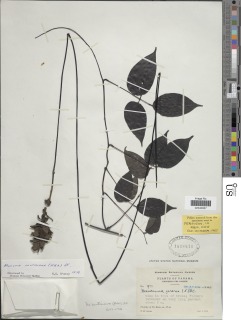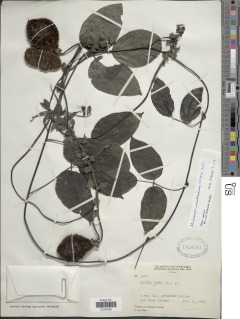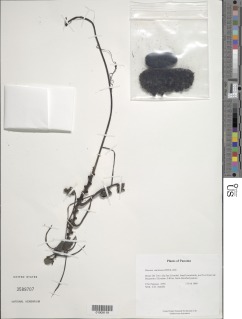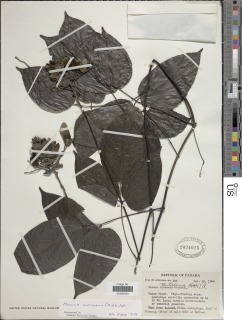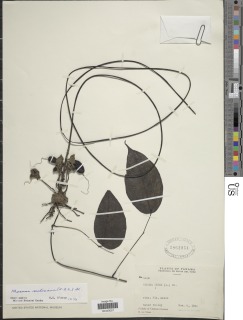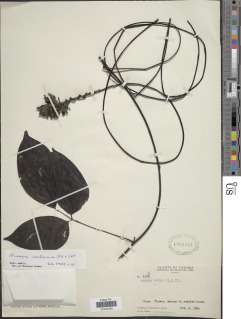

|
|
|
|
Family: Fabaceae
|
Large herbaceous vine, climbing to 15 m high in trees, somewhat twining. Leaves trifoliolate, usually drying black; stipules linear-lanceolate, to 5 mm long; petioles 4-9 cm long; petiolules dark, slightly pulvinate, articulate, subtended by stipels at base; leaflets ovate to elliptic, acuminate, oblique at base, 7-16 cm long, 4-7 cm wide, often drying dark, the veins at base 3 or 4. Inflorescences densely tomentose, in many, umbellate clusters of usually 3 flowers each at the end of pendent peduncles to 2 (5) m long, each umbel subtended by deciduous ovate bracts, their nodose bases persisting on the peduncle; pedicels spreading, to 5 cm long, curved down at apex, the flowers pendent; calyx cup-shaped, 11-13 mm long, dark-ferruginous, the trichomes numerous, slender, irritating, ca 2 mm long, the lobes inconspicuous except for the carinal tooth; petals inconspicuously colored, violet to flesh-colored; standard rounded, emarginate at apex, to 4 cm long; keel greenish, the wings ca 5 cm long and 1.5 cm wide, twisted, clawed and markedly auriculate at base; stamens 10, 9 fused into a tube except near apex, the free stamen and 4 alternate stamens of the staminal tube bearing shorter anthers, these anthers perpendicular to filament, cordate at base, attached medially, with one end bearing a conspicuous loose tuft of brown trichomes, the other anthers erect, glabrous; anthers shedding pollen in bud; style longer than anthers in bud, pushing through point of keel before keel is fully opened. Legumes oblong, to 13 cm long and 6 cm wide, constricted between seeds, densely covered with sharp, reddish-brown trichomes and numerous, narrow, transverse ridges to 1.5 cm high; seeds usually 1 or 2, round, flattened, 2.5-4 cm wide, dark brown, with a conspicuous flat scar three-fourths of the way around their circumference. Croat 7426, 12611. Uncommon, hanging over the edge of the lake along the shore, perhaps also in the forest. More abundant in the Canal Zone along roads. Flowers from October to January, especially in November. The fruits mature from January to April, but seeds may hang on the pods until June. Plants have been seen putting on new leaves in August. The nectary is functional prior to the opening of the flower. Bats, as pollinators (R. Foster, pers. comm.), probably gain entrance by pushing the banner back and forcing open the auricles of the wings. The wing petals are fused to the keel petals at the base and consequently are pulled apart from the base to the apex. The style and staminal tube then spring forward and strike the pollinator's abdomen. Specimens of this species (Wetmore & Abbe 53 and Shattuck 53) were misidentified as M. bracteata Dwyer, which may not be a distinct species. M. mutisiana has also been confused with M. urens (L.) Medic., which also may not be specifically distinct. |
|
|
|

